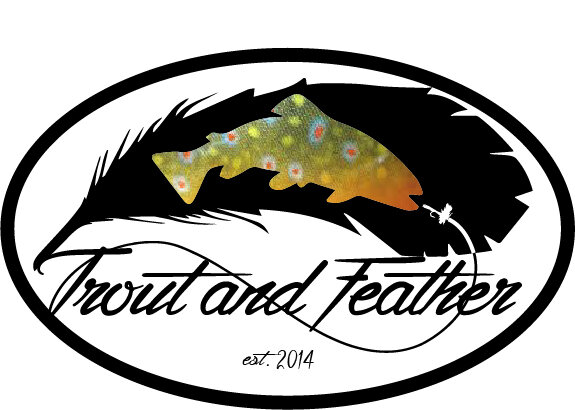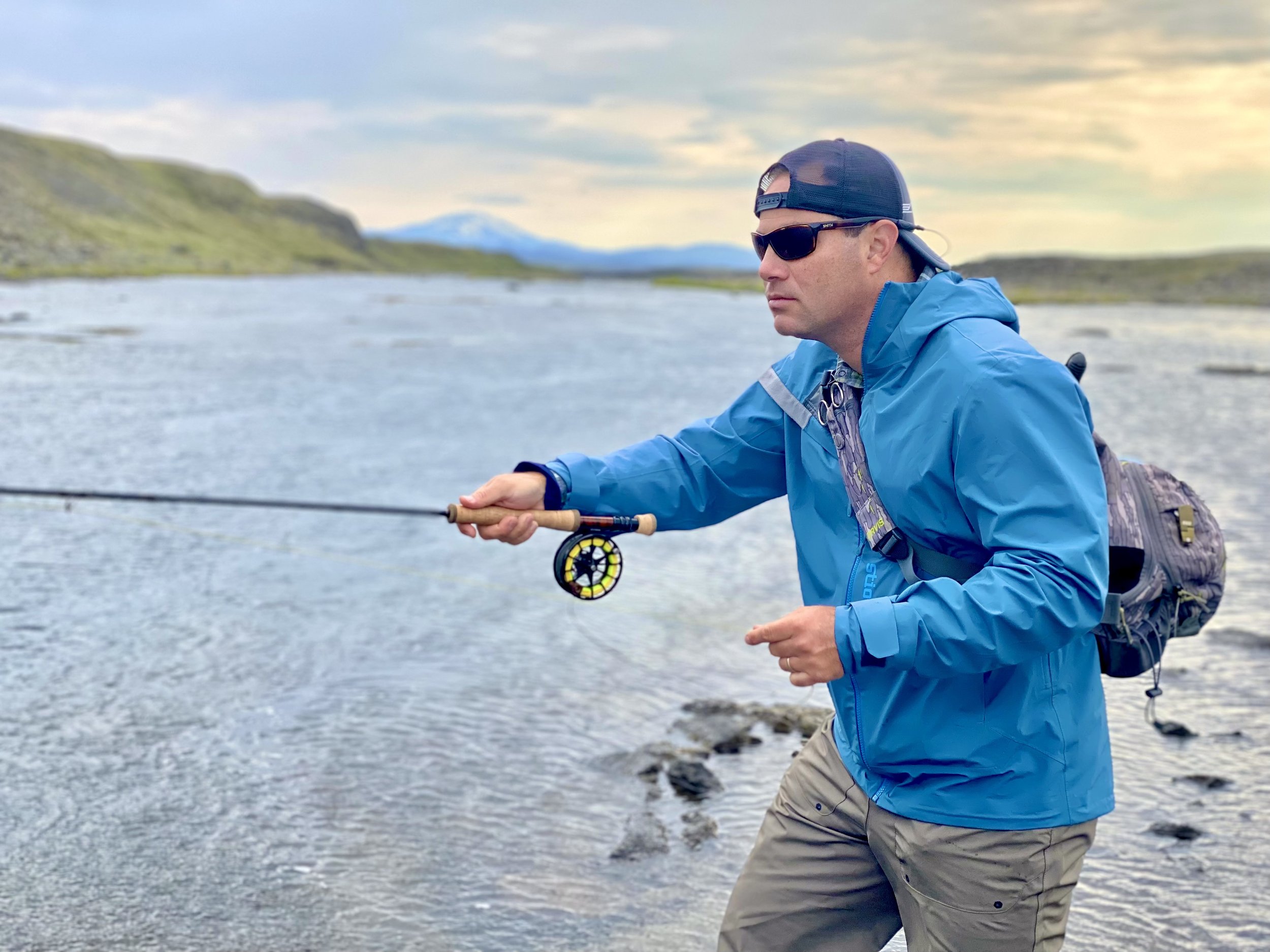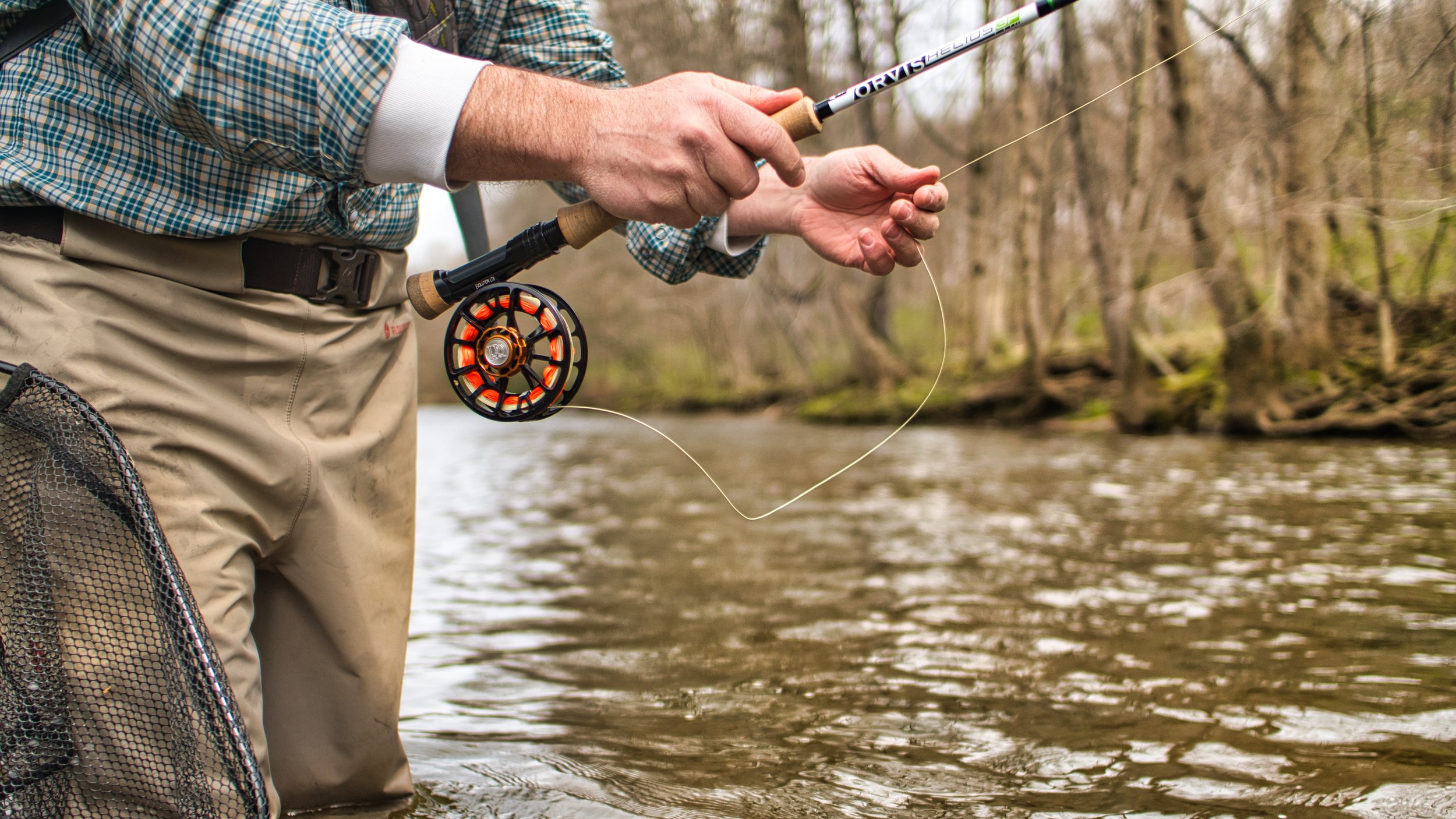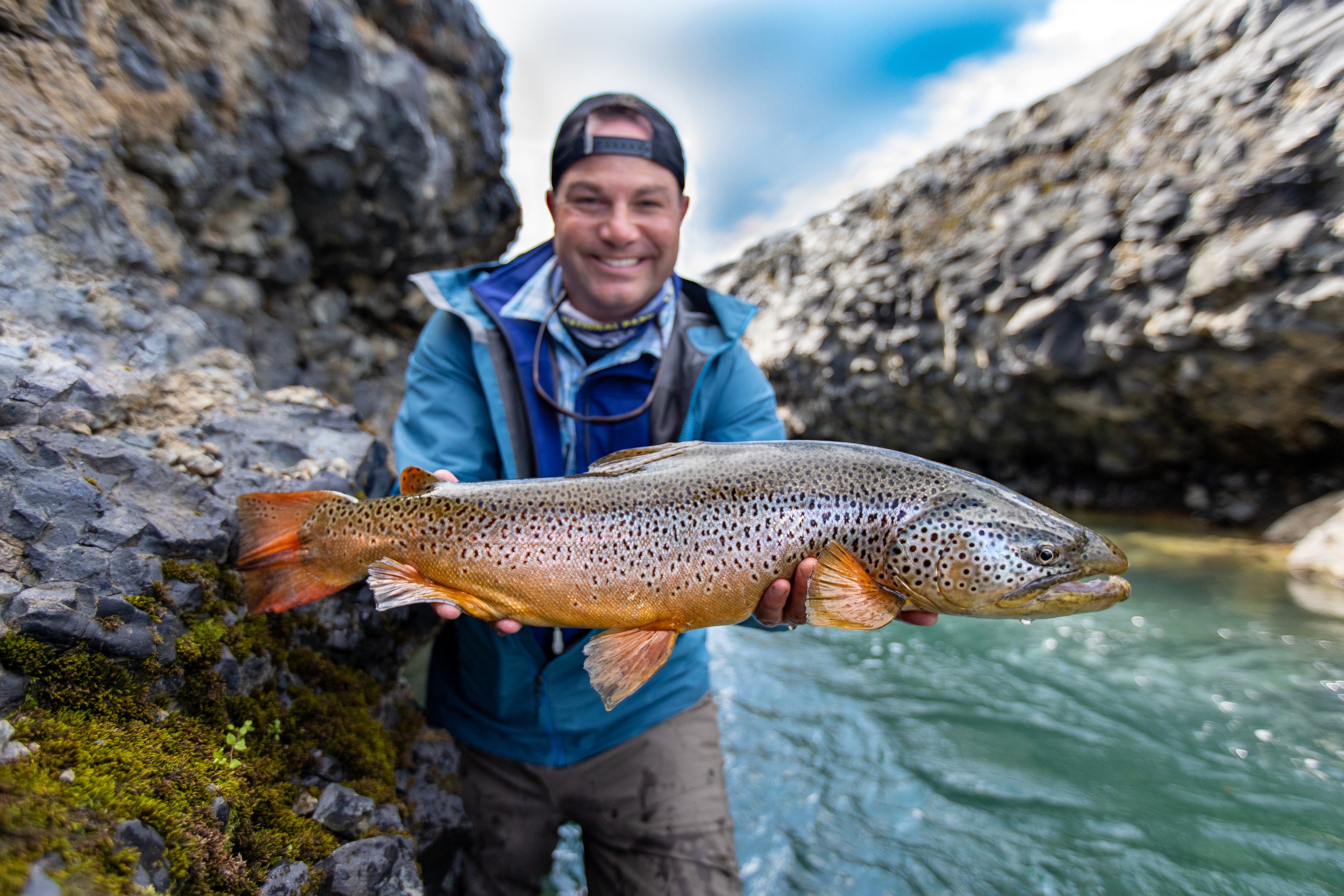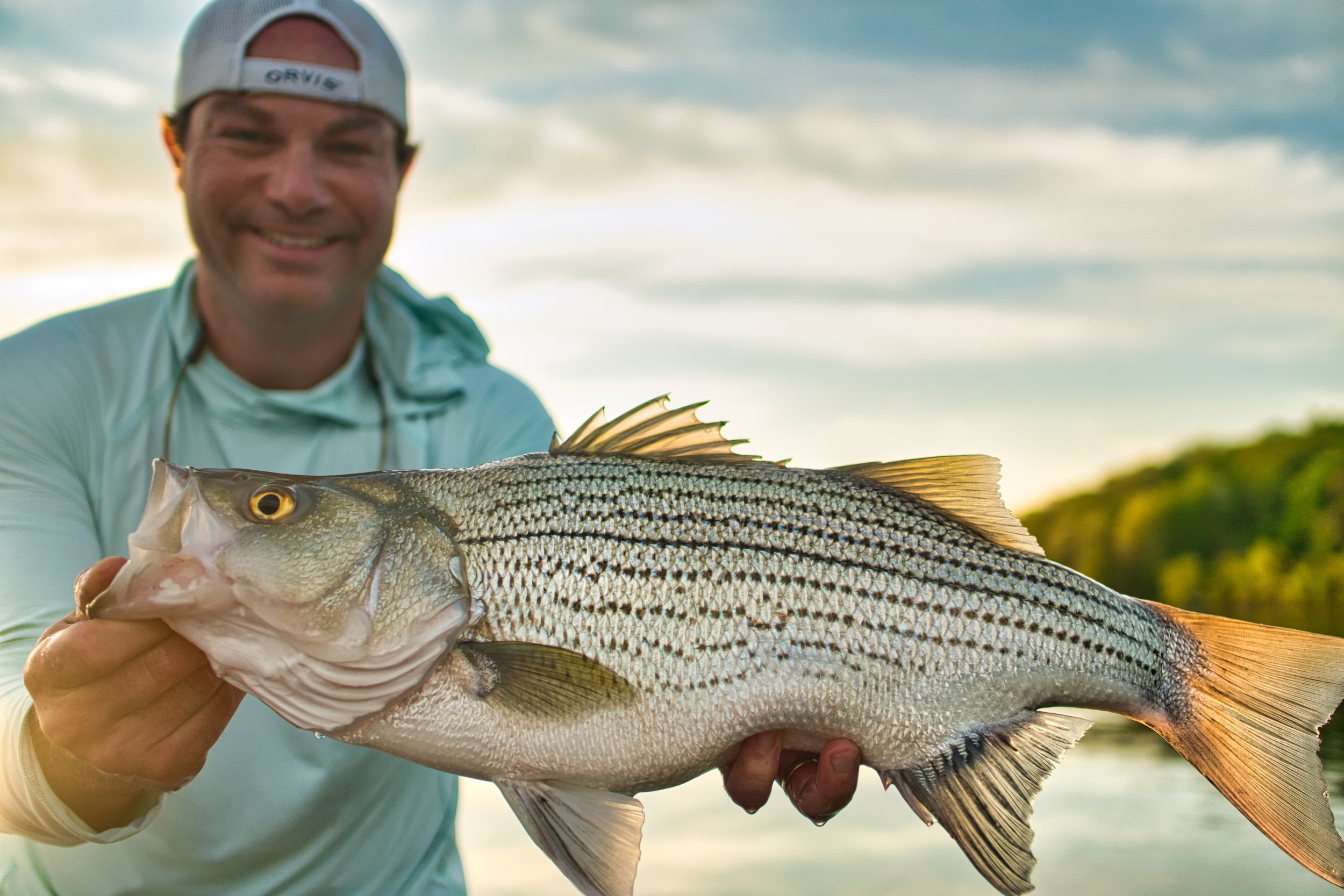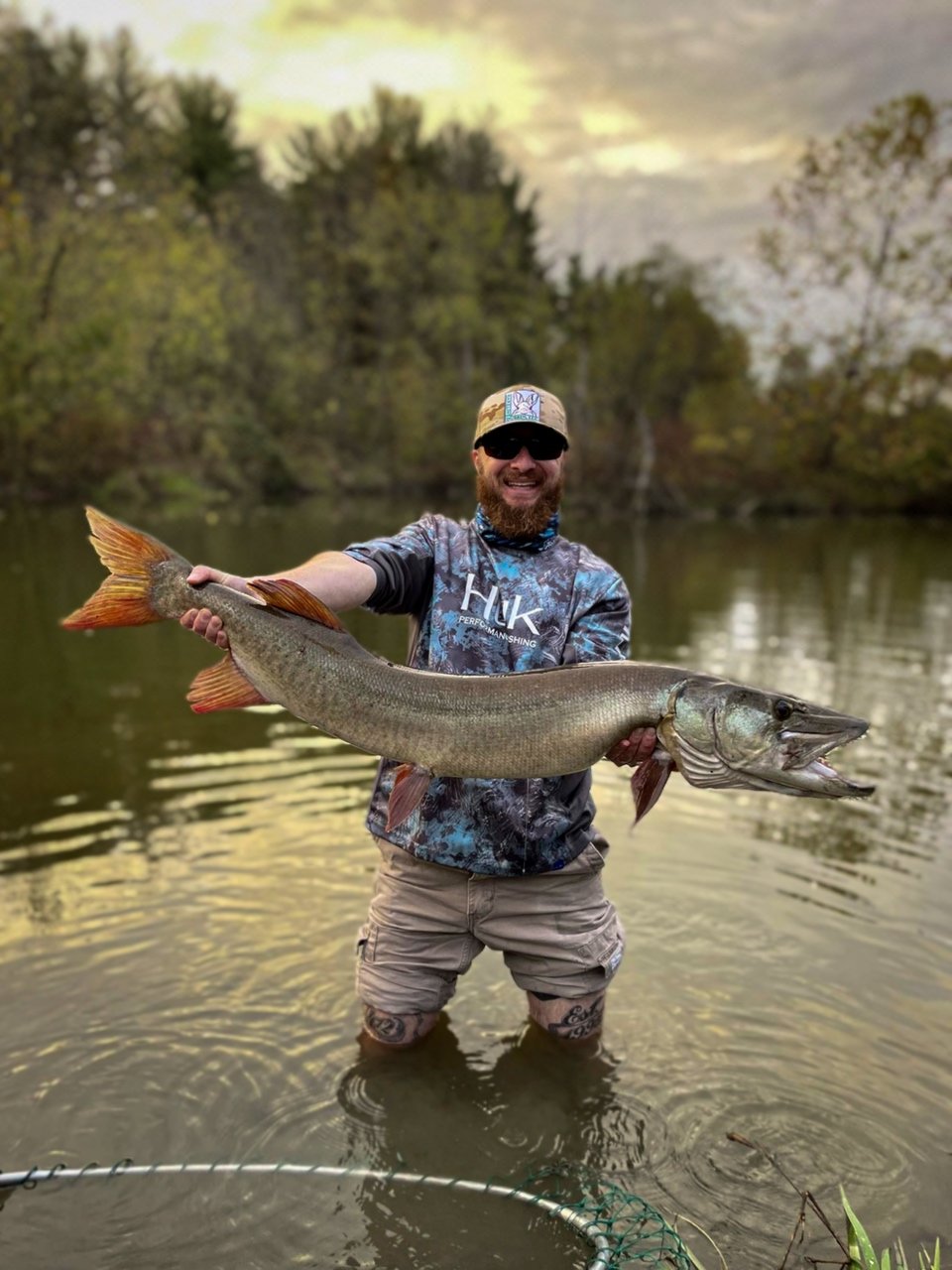Does the perfect fly rod exist? If you would have asked me 30 years ago, then I had an EASY answer for you: Yes, the perfect fly rod is a 9’ 5-weight. Yet I rarely fish that rod anymore, so what's changed? Let’s talk about using different fly line weight to chase different fish, plus I'm going to share with you some fly rods that are perfect (at least for me!).
A little background, my first fly rod over 30 years ago was a 7’6” 5-weight. It was a Christmas gift, just what I wanted, and I used this new gift for everything: Trout, panfish, and bass. As a young fly fisher, I had one rod, that was MY rod and I was proud of it. But then I made my first mistake, I started reading magazine articles, watching fly fishing shows on television, watching VHS tapes (yes, I watched them!). Basically, I was learning more about fly fishing, but subconsciously doing research that kept pointing to one fact in fly fishing: The perfect fly rod existed and it was a 9’ 5-weight.
So you can imagine my disappointment when my dad got us two new fly rods and mine was an 8’ 6” 5-weight. You would have thought my world was over! Yet I started fishing with that rod, using it to catch all kinds of different species, even if it wasn’t “perfect.” Did that really make a difference in my fly fishing, as this rod was 1/2 foot shorter than I wanted? Absolutely not!
Let’s fast forward to today. I don’t use that 8’6” rod anymore, nor do I use a 9’ 5-weight either. What changed? Examining this from the fishing industry, rod manufacturers have taken note that consumers love choices, so they have given us LOTS of options. There are so many rods out there just for a specific niche in fly fishing. I'm talking about trout spey, rods to throw streamers, dry fly rods, Euro nymphing rods, and so many more. There are even rods that break down into six or more pieces so you can backpack into the wilderness. Basically ask for it, and you shall receive!
Back to my dad, he tends to go with the small rods when fly fishing, something like a 6’ 3-weight. He loves to trout fish on small streams in Pennsylvania, and there is nothing better than battling a fish on a 2- or 3-weight. A bent rod and hard-fighting fish, now we’re talking. But if we flip scenarios and show up on a lake with that rod on a windy day, well, you have no business being there. The casts and your ability to reach will be difficult, thus it’s time to change fly rods.
This speaks to the point that many rods designed today are done so for a specific purpose, niche, or even location. It's kind of cool to think about that, though that does make it difficult for consumers since there are all of these different options.
My turn to share some favorite fly rods that I use throughout a typical fishing year. So if you see me fly fishing, you’re going to see me with one of these rods in my hand, hopefully catching a fish! Let’s go through these rod types as I share how they are perfect for the situations and types of water I fish.
European Nymphing Rods
Let's start with trout and rods specifically designed for European nymphing. I dove head first into this rabbit hole because it is such an effective technique and brings out so many different styles of fishing. You have to be in tune with everything going on during those moments so without a doubt, I am going to recommend that you at least investigate European nymphing if you haven’t done so already. So what does that European rod look like?
Is Euro nymphing cheating? Of course not, it’s a highly effective way to fly fish for trout and char! Learn more about this style of fly fishing: HERE
Years ago, I used to build bamboo fly rods and my favorite taper was a Dickerson. It had a heavy butt section and flexible tip, which is very similar to today’s Euro rods. Think a 5-weight rod with 2-weight tip. What’s the benefit of that? Simple, you have the base of this rod to land heavy fish, yet a flexible tip to protect fine tippet. For my daily fly trout fishing, the European nymphing rods steal the show. But remember, in all things fly fishing, there are constantly trade-offs. In this case, the trickiest part of using these rods is learning to cast them properly, and it can be difficult! Keep at it and with practice, you’ll be throwing nymphs, dry flies, and even streamers on a 3-weight Euro rod!
Favorite nymphing rods:
1. BEST IN CLASS Thomas & Thomas Contact II 10’9” 3-weight: Which rod is today’s top anglers fishing choosing over all others? Here it is! With exceptional recovery and swing speed, this rod has it all. Thomas & Thomas offers many different lengths and weights to choose from, including 2-, 3-, 4-, and 6-weight models. If you’re looking for a high-end Euro rod, go with the 10’9” 3-weight and you won’t look back!
Are these rods expensive? Yes, and this is the rod that many serious Euro anglers aspire to purchase. This rod comes with an exceptional warranty, the ability to protect fine tippets, and is lightweight. Able to throw nymphs, streamers, and dry flies with ease, the Contact II is the #1 fly rod in nymphing today. If you want to fish with the rod that today’s best anglers are fishing with, look no further. Learn more here.
The 11’ 3 weight Orvis Blackout is a favorite of mine! Watch the video of my early review: HERE
2. TOP 11’ MODEL Orvis Blackout 11’ 3-weight: Another “go to” Euro rod for so many veteran angler, including George Daniel. This rod was new for my 2022 season and did not let me down. The Blackout is accurate, can throw heavier flies without a problem, and is great for protecting 7x tippets. My biggest regret? Why didn’t I buy an 11’ Euro rod sooner??
Has it been perfect? There is no such thing! When I started landing trout with this rod, there was a learning curve since rod is longer than any I previously used. I eventually got the hang of it and even landed 2 trout on one cast! LINK
Also, this is the most expensive rod in my arsenal, thus something to consider when purchasing. Do you travel a lot when fly fishing? If so, make sure your travel case is able to hold this rod, as it’s 11’ and the longest fly rod I currently fish. Link to buy
3. BEST VALUE Cortland Nymph 10’ 6” 3-weight: The Cortland Nymph series of rods tends to be the first rod I recommend if you’re new to Euro nymphing, but the rod easily outperforms many others above its price point. This rod can thrown nymphs with ease, plus small streamers and even dry-dropper setups. This series also comes in a 2- and 4-weight, so there are other options available. Give this rod a serious look. Learn more here
4. NEW TO MY ARSENAL Master Nymph Bellator 10’6”: These rods have been making waves in fly fishing for a few years, as their designer came from Cortland to work on this model. And what did he come up with? Possibly the best casting rod in nymphing rods! Being that Master Nymph rods have a limited yearly run, you won’t see these in your local fly shop. Instead, it’s more word-of-mouth with these rods; find someone who has fished them and you’ll realize why the Bellator series is in my Top 5 of nymphing rods. Learn more here.
5. BEST MID PRICE Diamondback Ideal Nymph 10’ 3-weight: You may recognize this name, as the Diamondback series were out years ago. Reintroduced by Joe Goodspeed, he came from Thomas & Thomas and designed the Contact I and II rods…noticing a trend here? Now you have a rod comparable to many premium nymph rods at around half of the price. Let’s talk about some differences.
With the Ideal Nymph series, there are many 10’ and 10’10” options in 2-, 3-, and 4- weights. If you’re asking for my recommendation, the 10’ 3-weight is the workhorse, but go with the 2-weight if you fish small water with small flies. Into larger rivers? The 10’10” 3-weight is your stick. Learn more here.
There are many more rods on the market for European nymphing, and some tend to be a lot better than others. What are the differences between a “good” rod and one I don’t recommend? In short, I want a rod that recovers fast after casting, is lightweight, and makes casts with accuracy. You can find most of today’s best nymphing rods here: CLICK HERE
If you’ve found a rod that ticks those boxes, time to fish! Unsure about a rod you’re thinking about? Don’t hesitate to shoot me an email for feedback: tcammisa@gmail.com
The almighty 6 weight!
Next favorite, let's jump up a few line sizes and go with a 9’ 6 weight. Why is this my next tier of rod? The 3-weight covers much of my daily fishing in moving water, so when I get to situations where I want to make further casts (think large rivers) or on lakes, this is the rod choice for me.
No matter what Mother Nature throws my way (including WIND! ), I’ll be out fly fishing. A 6-weight fly rod has enough backbone to punch through the wind, even when using slightly heavier flies. The 6-weight rod is a favorite for trout and bass, plus it can be used in many specialized situations. If I’m fishing from a drift boat with nymphs, the 6-weight is the first rod I grab. When fly fishing for steelhead in Pennsylvania, the 6-weight rules in the tributaries. Remember, not all 6-weights are equal, thus when in doubt, head to a local fly shop to test cast some and determine which is best for you.
FAVORITE 6-WEIGHT Lamson Velocity 9’ 6-weight: I love this fly rod for so many different reasons, it has exceptional recovery and throws every fly I want. Plus, the Velocity feels light in my hand, almost deceivingly so. Yet when paired with the fighting butt (handle I prefer), this rod can land some serious fish!
During the summer 2023, this was THE ROD I brought to all of my fly fishing destinations. All of my guides knew that Lamson made some of the best fly reels in the world, so they were shocked once they cast this rod. Lamson has it priced right, plus the orange accent wraps look sharp when held next to a wild brown trout! Click HERE to learn more about the Lamson Velocity.
Hanak Superb 798 9’8” 7-weight: You read that correctly, this is a 7-weight, and Hanak also features the 698 model (6-weight). This rod is designed to throw flies in lakes for large fish, and it works excellent on windy days. I also fish for Atlantic salmon and sea-run brown trout, thus this rod has the ability to be a go-between for much of my fishing style. Learn more here
Have you heard that I host trips to Iceland, Alaska, and more? Click HERE to learn more about my next trip!
Striped bass like this are a favorite to catch on a fly rod? An 8-weight works well, as it can punch through the wind and deliver a heavy fly. Here is a favorite 9’ 8-weight: LINK
Big Fish, Big Rod? No…Big FLY, Big Rod!
The last tier of rod that I use falls into the 8-weight category. Most assume that means I’m chasing bigger fish, especially saltwater. That may be true, but the main reason to go up in size is to have the ability to throw larger flies, especially in tough weather conditions. When fishing around the Atlantic Ocean, you’ll find me with an 8-weight chasing species from striped bass to speckled trout. An 8-weight performs incredible in so many situations, but think back to the fly selection, too. For example, I have recently been chasing musky around Pennsylvania. For the size fish I’m chasing, an 8-weight matches perfectly. However, I’m throwing flies up to 10'“ long and this weight category isn’t enough to meet the challenge of a wet sock. Think about what you want out of a heavyweight rod, then begin your research.
Orvis H3 3D 9’ 8-weight: Hmm, am I turning into an Orvis fan boy?? Apparently! I have owned a handful of 8-weights, from companies including St. Croix and Allen Fly Fishing. Each rod shows its strengths; the former has great tippet sensitivity, while the latter is a canon that throws fly line forever. When I heard about the 8-weight H3, I wanted to cast it and see what the rod felt like. There were two models, the 3D and 3F, with the 3F being a bit more sensitive and accurate. I brought my reel and 8-weight line to the shop and tried both out. There was as a slight difference, but both rods were extremely accurate. The 3D was my choice, knowing I fished in a lot of wind and inclement weather. Link to learn more
Since purchasing this rod, I have used it seemingly everywhere! Chasing muskies and hybrid striped bass on lakes is the most common use, though I will occasionally use an 8-weight for largemouth bass when I want to throw obnoxiously large flies. For steelhead, I prefer a 6-weight in the streams, but if I want to bomb casts in Lake Erie to fish preparing to make their run, the 8-weight is what I reach for. When traveling to Iceland, I use this rod for Ice Age brown trout in Lake Thingvallavatn, plus for the large rivers when fishing for salmon.
Was I happy with my choice? Absolutely, as this rod simply delivers, pulling line from my hand during the forward haul. The 8-weight travels with me to the Outer Banks for speckled trout and redfish, plus is able to handle tippets finer than I anticipated. Does it cost more than my previous 8-weights? Heck yeah, it’s a pricey rod, but I feel it has taken the best qualities of those rods and put them together in the perfect 8-weight for me.
The Next “Perfect” Fly Rod
Have I found the perfect fly rod? Of course not, I have a handful of rods that I use based on a variety of situations. For trout, I’m going to have a Euro 3-weight. When it’s time to chase bass or fish a large river, the 6-weight enters into my arsenal. Saltwater time? Then I’ll be grabbing an 8-weight. That “perfect” 9’ 5-weight is no longer in my arsenal, but should it be in yours? As you’ve read, my rod choices tend to be specialized based on my fishing, but if I could only choose one rod, it would fall somewhere between a 5- and 6-weight, as that class would be ample to handle the majority of fish I chase.
But what’s next? As mentioned, musky are a turning into an addiction, and the 8-weight isn’t going to cut it. So do I go with an 11-weight? What about saltwater species that require heavier flies in windy conditions? Will a 9- or 10-weight handle the job better? This is the beauty of fly fishing, we have lots of choices to help solve problems! Plus, as technology improves with rod manufacturers, I anticipate more rods being added to my arsenal, replacing those I currently use.
As you’ve figured out, there is not one perfect fly rod for me, there are many. Now it's your turn, tell me about your perfect fly rod. But don't just tell me about the rod, tell me about what species you use it for, where you're located, the water type; give us some details down below in the comments section. I know that I will learn lots from you because there are so many great fly rods out there and I’d love to hear which one you turn to… even if it is a 9’ 5-weight!
The “perfect” fly rod is always changing! View this video to see some of my favorite rods: CLICK HERE
BY TIM CAMMISA
I share my passion for fly fishing and fly tying through personal experiences and expert insights. As a seasoned fly fishing guide turned content creator, my YouTube channel boasts over 5 million views, offering viewers a wealth of knowledge and inspiration. While I cherish moments chasing trout in Pennsylvania with my family, I also lead fly fishing expeditions to the captivating landscapes of Iceland and Alaska. Additionally, I authored the acclaimed book Fly Tying for Everyone, aiming to empower fellow enthusiasts to tie superior flies, elevate their angling game, and savor unforgettable moments on the water.
If you click on links we provide, we may receive compensation.
